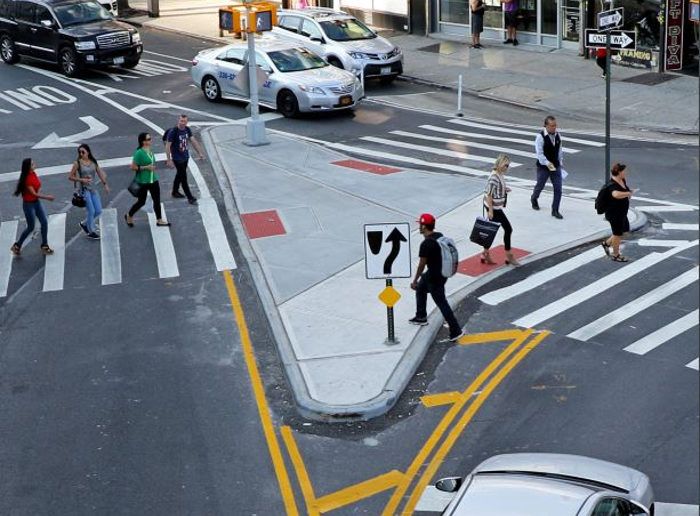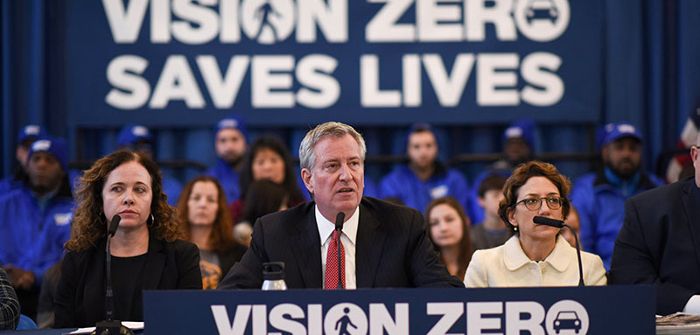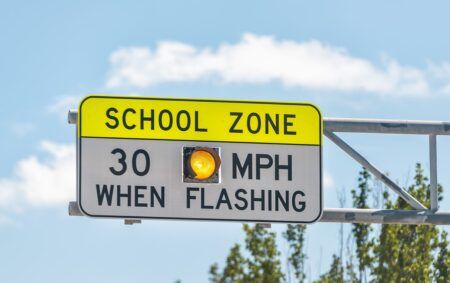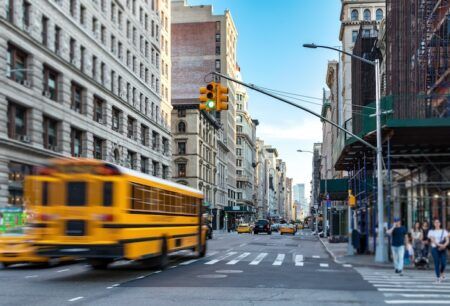New York City Mayor Bill de Blasio has launched a new expansion of the city’s Vision Zero program with an action plan to make the most dangerous streets in the city safer for pedestrians and other road users.
The mayor has released the New York City Department of Transportation’s (NYCDOT) new Borough Pedestrian Safety Plans, which target the next wave of streets and intersections the city will make safer for pedestrians, cyclists and drivers.
The plans use the latest crash data, showing that just 7% of the city’s streets, covering 424 miles (682km), are responsible for nearly half of all pedestrian fatalities. By the end of 2019, the city will change traffic signals on all the newly added corridors to discourage speeding, and give pedestrians exclusive crossing time at 300 intersections to prevent crashes.
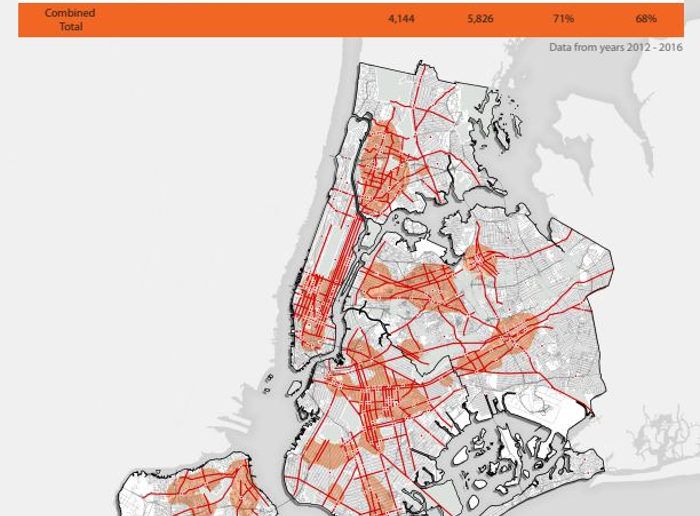 The new priority streets and intersections are the roadmap for future Vision Zero safety projects and enforcement, ensuring tools such as speed cameras, police enforcement and re-engineering are applied where they will save the most lives.
The new priority streets and intersections are the roadmap for future Vision Zero safety projects and enforcement, ensuring tools such as speed cameras, police enforcement and re-engineering are applied where they will save the most lives.
In February 2015, NYCDOT compiled data on crashes, deaths and serious injuries on its streets to create the Borough Pedestrian Safety Plans. The detailed, data-driven plans provided a new road map for Vision Zero, by identifying the most dangerous areas, intersections and corridors in the city. Since then, the administration has made these areas the focus of its Vision Zero efforts.
NYCDOT has now addressed 90% of those intersections and 86% of the street-miles targeted in 2015, leading to a 36% drop in pedestrian deaths at those locations, which is driving the downward trend in citywide traffic fatalities.
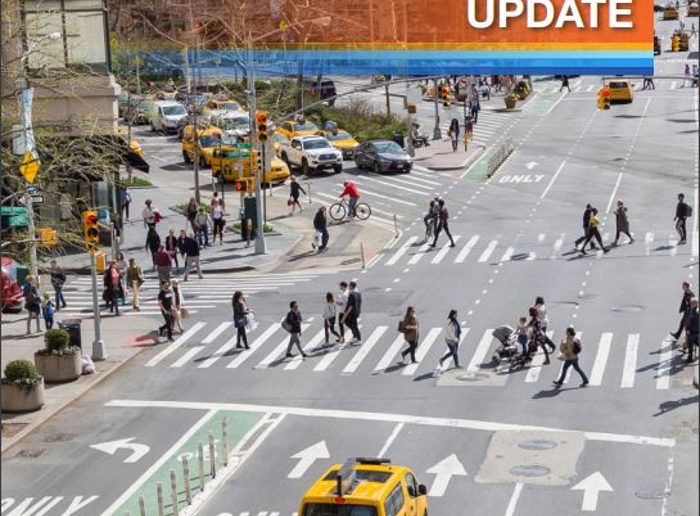 Using new data, NYCDOT is identifying new priority locations around the city. Some locations are receiving more in-depth interventions than they had previously, while new locations will receive critical safety upgrades. Places where crashes declined by the greatest margins will continue to be closely monitored.
Using new data, NYCDOT is identifying new priority locations around the city. Some locations are receiving more in-depth interventions than they had previously, while new locations will receive critical safety upgrades. Places where crashes declined by the greatest margins will continue to be closely monitored.
As part of the lookback on first half-decade of Vision Zero and the first installment of borough plans, NYCDOT evaluated which treatments to keep a focus on while adding several new actions for 2019. The new actions for 2019 include:
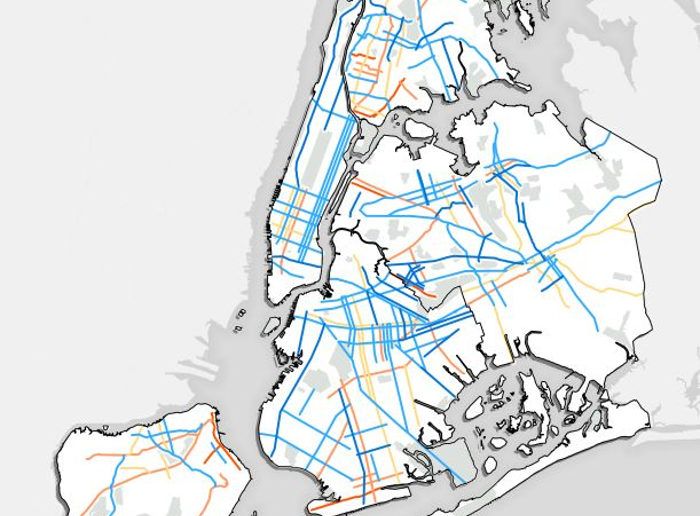
- Add exclusive pedestrian crossing time (LPIs) at every feasible intersection on all new priority corridors by the end of 2019;
- Modify signal timing to reduce speeding on all feasible new priority corridors by the end of 2019;
- Launch Integrated Data-Driven Speed Reducer Program (speed humps and speed cushions);
- Track Vision Zero Violations at the Priority Corridors, Intersections and Areas;
- Launch a High Visibility Enforcement Program on Priority Corridors;
- Launch a targeted Corridor Outreach Program;
- Launch a Driveway Safety program to address issues with vehicles crossing sidewalks;
- Conduct a comprehensive study of senior pedestrian injuries;
- Collaborate with the Business Integrity Commission to improve the safety of commercial waste fleets.
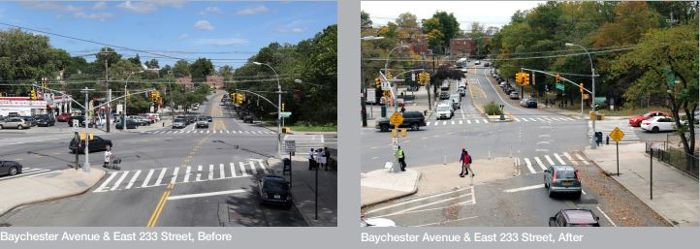
“Over the last four years, our groundbreaking Borough Pedestrian Safety Plans have enabled us to target our resources where they will save the most lives,” said NYCDOT Commissioner Polly Trottenberg.
“In these updated plans, we have used the freshest data to identify new crash-prone corridors and intersections most in need of our full menu of safety interventions.”
